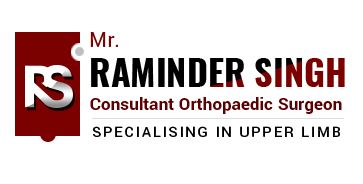What is Malunion?
Malunion, also known as crooked healing, is the failure of a fractured bone to rejoin properly due to poor alignment of the fracture fragments. The condition results in abnormality and deformity of the bone (bent or twisted bone).
Causes of Malunion
The main causes of malunion in the elbow include:
- Imperfect alignment or positioning of the broken bones
- Improper stabilisation of the fracture union during healing causing movement of the broken bones
Factors such as tobacco use, obesity and diabetes can also affect bone healing resulting in a malunion.
Symptoms of Malunion
Malunion in the elbow is characterised by:
- Rotation and/or angulation (bend) of the fractured bone
- Stiffness and difficulty flexing or extending the elbow
- Discomfort or pain in the elbow
- Swelling at the elbow
How is Malunion Diagnosed?
Malunion can be diagnosed by:
- A physical examination
- Imaging tests (X-ray, CT Scan or MRI)
What are Non-operative Options for Malunion?
Non-operative treatment options for malunion include: active exercises, splinting, passive mobilisation and use of continuous passive motion machines.
What are Operative Options for Malunion?
To correct a malunion your doctor may perform a bone realignment osteotomy (correction osteotomy) and placement of bone graft.
The aim of treatment is to correct the deformity and improve function of the upper extremity. Surgery is performed under anaesthesia. The bone is rebroken and the fracture fragments are realigned properly. The bone may be trimmed for proper orientation if necessary. Screws, pins or plates may be used to stabilise the fracture union as it heals. Bone graft may be placed at the site to encourage bone growth and fusion.
What Happens after Your Surgery?
After surgery, a post-operative dressing/splint is placed. Medications are prescribed for pain control. Smoking should be avoided as this can delay healing and promote malunion. You are advised not to bear weight on the arm initially and to gradually increase your activities as directed by your doctor.
Your Rehab
You may be advised to undergo physical and/or occupational therapy weeks after surgery to improve strength and function of the arm.




